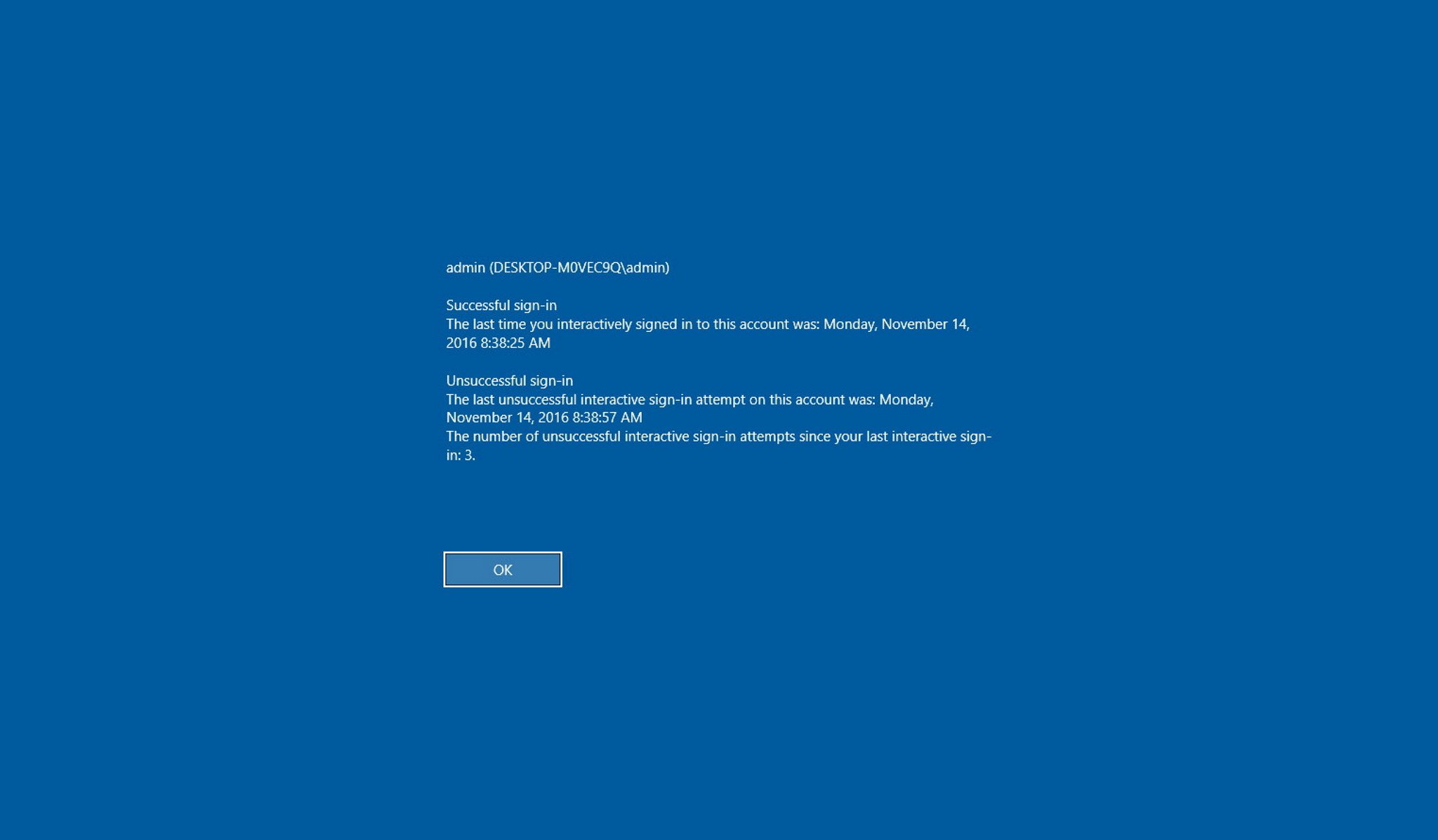
Here’s an easy and quick way to add a string to your Path environemnt variable:
[Environment]::SetEnvironmentVariable("Path", $env:Path + ";C:\SomethingYouLike", [EnvironmentVariableTarget]::Machine)
And…you’re done! ;)

Here’s an easy and quick way to add a string to your Path environemnt variable:
[Environment]::SetEnvironmentVariable("Path", $env:Path + ";C:\SomethingYouLike", [EnvironmentVariableTarget]::Machine)
And…you’re done! ;)

For debugging purposes you may need to get information about the last login on a machine, so here’s a tip to show you that information in a very easy way.
You can use both Group Policy or Registry to achieve this:
Group Policy
Registry
And you’re done!
For both cases, restart your machine to view the change in action.

Usually you can achieve Windows customization by simply running throught Control Panel (or Settings) menu, or for a more enterprise approach, you can apply group policies that helps doing the job.
Well, for some reason there’s no direct option though GPO to remove the network icon from Windows lock screen., so here’s a tip to do it using registry editor.
You can use it directly on Windows or using Group Policy Preferences (GPP) on your enterprise environment.
Registry
Now just restart you’re computer and you’re done!

So…although you’re a geek and you really like to create your own scripts for managing your WIM files, sometimes you feel that a GUI app would be just great and it would really be a time saver.
Some of you may already know a tool called GImageX but from my experience I think this one its superior.
VDISM, available throungh SourceForge website, it’s a fenomenal tool with a very simple interface that gives you access through a graphical interface to all things you need for servicing WIM files.
It’s really really easy to use and so intuitive that you will probably will not use command-line anymore.
Features:
Go ahead and try this great tool: SourceForge – VDISM